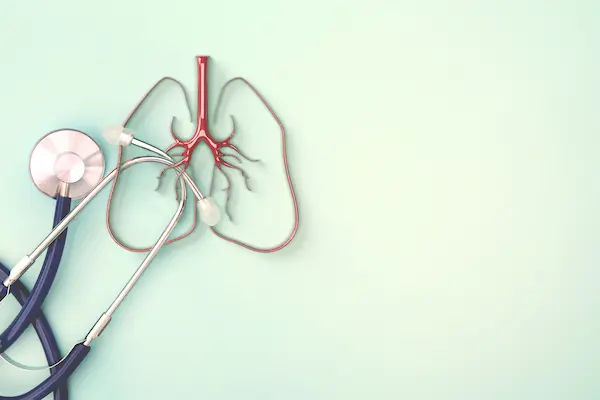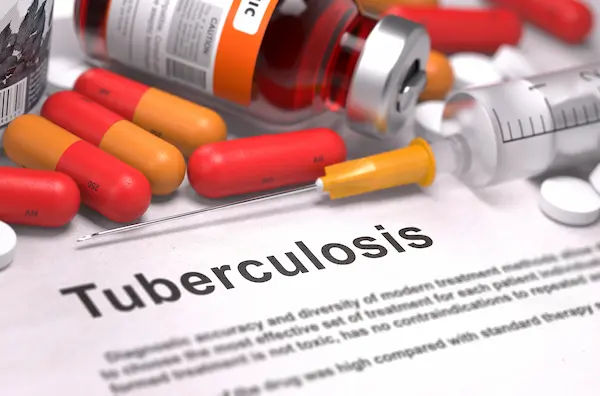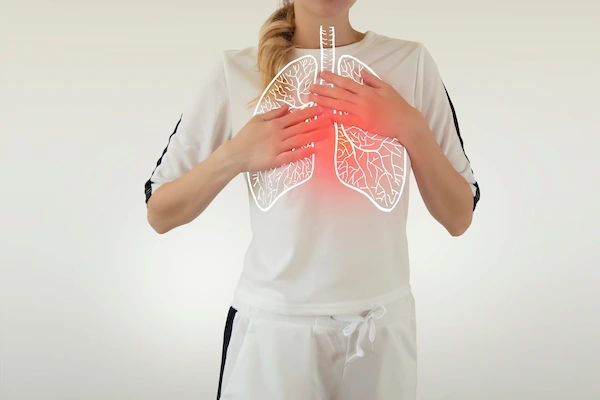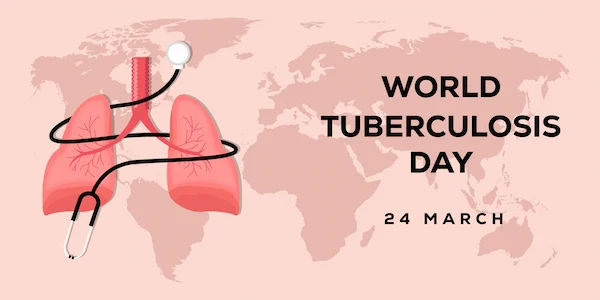Guide to How Tuberculosis Affects Immunity
Understand how Tuberculosis (TB) interacts with your immune system, from initial infection to the formation of granulomas. Learn about risk factors (HIV, diabetes), essential prevention steps, and how to support your immune health during treatment and recovery.

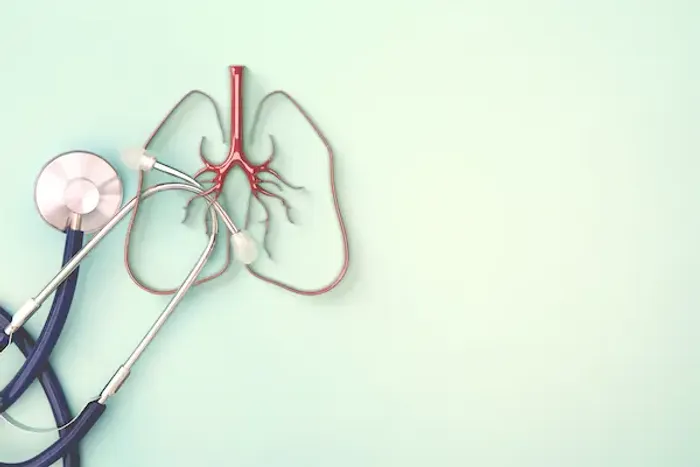
Introduction
Tuberculosis is one of the world’s oldest infections—and still one of the most complex.
If you or someone close to you has TB, you’re probably wondering what it does to your body’s defences and how to keep your immunity strong through diagnosis, treatment, and recovery. This guide explains how tuberculosis interacts with the immune system in everyday terms, from the moment the bacteria enter your lungs to the body’s attempt to wall them off inside granulomas. We’ll cover why some people get sick while others don’t, how conditions like HIV or diabetes change risk, and what you can do to support your immune health during and after TB treatment. We also look at symptoms, modern tests, vaccines, and preventive therapy for household contacts, with practical tips you can use today. Whether you’re managing latent TB, active disease, or caring for a loved one, this is your practical, evidence-based guide to TB and immunity.
Tuberculosis and Your Immune System: The Basics
The immune system mounts a layered defence, attempting to either clear the bacteria or contain them in a latent state.
Consult a Top Pulmonologist for Personalised Advice
TB is caused by the bacterium Mycobacterium tuberculosis (M. tuberculosis). It spreads when a person with infectious pulmonary TB coughs, releasing tiny droplets that carry the bacteria. Not everyone who breathes in the bacteria gets sick. In fact, most people who are exposed either clear the bacteria or contain them in a “latent” state that produces no symptoms. This is where immunity matters most: your body mounts a layered defence that starts with the innate immune system (rapid, first-line responders) and leads to the adaptive immune system (more targeted, long-term protection).
Innate and Adaptive Defences
Innate immunity includes the physical barrier of your airway lining and immune cells like alveolar macrophages—
specialised cells in the lungs that engulf bacteria. With TB, these macrophages can be both helpful and vulnerable: the
bacteria are adapted to survive inside them, using this “safe house” to grow unless additional immune signals summon
reinforcements. Dendritic cells then carry TB antigens to lymph nodes, activating T cells. Adaptive immunity,
particularly the Th1 response, produces cytokines like interferon-gamma that “activate” macrophages to kill TB more
effectively. Over time, the immune system forms structures called granulomas—tight clusters of immune cells that try to
trap and starve the bacteria.
Two Real-World Takeaways
- Latent TB and immune response: If your immune system contains TB without symptoms, that’s latent TB infection
(LTBI). Around 5–10% of people with LTBI may develop active disease over their lifetime, especially if immunity
weakens due to HIV, diabetes, or other factors. - How tuberculosis weakens the immune system: TB doesn’t destroy immunity outright, but it can exhaust and
dysregulate immune responses over time, especially in severe or prolonged disease. Comorbidities like undernutrition or
HIV co-infection can further tilt the balance in favour of the bacteria.
Unique Insight: Immunity isn’t just “strong or weak”—it’s about balance. In TB, too little response allows spread; too much, or misdirected, inflammation can damage lung tissue.
What Happens Inside the Body: From Infection to Granuloma
The infection is a biological tug-of-war, with the immune system creating containment structures that can ultimately break down and lead to active disease.
Imagine TB infection as a tug-of-war. When bacteria reach your lungs, alveolar macrophages try to engulf them. TB’s
cell wall and survival tricks help it resist killing. The immune system escalates by recruiting more cells—macrophages,
T cells, and others—to form a granuloma, a compact “containment vault.” Within granulomas, the bacteria may go
dormant, and the person remains well (latent TB). But granulomas can break down (caseate) and liquefy, creating
cavities where bacteria multiply and spread via coughing.
Key Steps Simplified
- Entry and survival: M. tuberculosis is inhaled and often survives inside macrophages by blocking normal killing
mechanisms. - Alarm and recruitment: Dendritic cells present TB antigens to T cells, especially Th1 cells, which release IFN-$\gamma
$ and TNF to boost bacterial killing. - Granuloma formation: Multiple cell types wall off infection; oxygen and nutrient levels drop, pushing bacteria into a
slow-growing state. - Breakdown and disease: If immunity falters, granulomas may disintegrate, allowing active TB disease—often with a
persistent cough, fever, weight loss, and night sweats.
Two Practical Takeaways
- Tuberculosis granuloma explained: Granulomas are a sign your immune system is working—containing bacteria to
prevent disease. They’re not permanent guarantees; ongoing immune balance keeps them intact. - Why early diagnosis matters: Cough and fever for more than two weeks—especially with known exposure—should
prompt testing. The earlier TB is identified, the less damage to your lungs and the easier it is to curb the spread.
Unique Insight: TB bacteria can “sense” stress within granulomas and shift their metabolism, making them harder to
eliminate. This is one reason TB treatment requires multiple drugs over months; you’re targeting bacteria in different
physiological states.
Why Some People Get Sick: Risk Factors That Modify Immunity
The progression from latent infection to active disease is heavily influenced by underlying health conditions that
compromise immune function.
Your risk of TB isn’t just about exposure—it’s about the state of your immune system and lungs. Some conditions
reshape the body’s defence against TB:
Major Immunological Risk Factors
- HIV: The single biggest risk factor; HIV weakens CD4 T-cell responses essential for TB control, increasing TB risk
many-fold. - Diabetes: Alters innate and adaptive immunity, impairing macrophage function and T-cell responses; risk of TB roughly
doubles to triples. - Undernutrition: Reduces immune cell number and function; a strong risk factor in many settings.
- Smoking and alcohol use: Damage airway defences and disrupt immune signalling, raising TB risk.
- Age extremes: Young children (immature immunity) and older adults (immunosenescence) face a higher risk of
progression and severe disease.
Practical Implications for Families
- TB and HIV co-infection effects on immunity: If you or a household member is living with HIV, prompt TB screening
and preventive therapy after exposure can be life-saving. - Diabetes and TB immunity: If you have diabetes, strict blood sugar control and regular follow-ups can lower TB risk
and improve treatment outcomes. If you need lab work the Apollo 24|7 offers convenient home collection.
Unique Insight: Risk isn’t fixed. Improving nutrition, stopping smoking, optimising diabetes control, and staying up to
date on vaccinations (like influenza) can meaningfully shift your immune landscape in your favour, even after TB
exposure.
Symptoms, Testing, and When to Seek Care
Persistent symptoms like a cough lasting over two weeks, coupled with modern molecular tests, guide the early
diagnosis of TB.
Common symptoms of active pulmonary TB include a cough lasting more than two weeks, fever, night sweats, weight
loss, chest pain, and sometimes coughing up blood. In children, symptoms can be more subtle—poor weight gain,
persistent fever, or lethargy. Extrapulmonary TB (TB outside the lungs) can cause site-specific symptoms, like swollen
lymph nodes, back pain (spine), or abdominal discomfort.
Modern Testing Methods
- Sputum Microscopy: Looks for acid-fast bacilli (AFB) under a microscope; cheaper but less sensitive.
- Molecular Tests (like Xpert MTB/RIF): Rapidly detect TB DNA and common drug resistance; recommended in many
settings as initial tests. - Culture: Gold standard for confirming TB and drug susceptibility but slower.
- LTBI Tests: Tuberculin skin test (TST) and interferon-gamma release assays (IGRA) detect immune sensitisation, not
active disease.
When to Act
- If cough, fever, or weight loss persist beyond two weeks—or if you’ve had close contact with someone with TB—
consult a doctor online with Apollo 24|7 for further evaluation. Early testing reduces complications and protects your
family. - Household contacts of someone with TB should be assessed for symptoms and considered for testing and preventive
therapy depending on age, immune status, and local guidelines. - If your condition does not improve after trying supportive measures, book a physical visit to a doctor with Apollo 24|7.
Unique Insight: A negative TST/IGRA doesn’t always rule out TB in very young children or severely
immunocompromised people—immunity may be too weak to mount a detectable response. Clinical judgment and
appropriate imaging/labs remain vital.
Treatment, Adherence, and Immune Recovery
Consistent adherence to the multi-drug regimen is crucial for clearing the bacterial load and allowing the immune
system to restore its function.
Standard treatment for drug-susceptible TB usually lasts at least 6 months: an intensive phase with multiple antibiotics
(commonly isoniazid, rifampicin, pyrazinamide, ethambutol), followed by a continuation phase (often isoniazid and
rifampicin). Drug-resistant TB requires longer, more complex regimens. Adherence is critical; incomplete treatment
allows bacteria to rebound and fosters resistance.
How Treatment Affects Immunity
- As bacterial load falls, inflammation declines and symptoms improve. Over weeks to months, energy and appetite
return—clear signs of immune recovery. - In people starting HIV therapy, a short-term flare called TB immune reconstitution inflammatory syndrome (IRIS) can
occur as the immune system “wakes up” and reacts strongly to TB antigens. Careful monitoring and coordinated
management are essential.
Supporting Your Body
- Nutrition to boost immunity during TB treatment: Adequate protein, calories, and micronutrients (especially Vitamin D
and iron if deficient) support immune cell function and healing. Check with your clinician before starting supplements.
Apollo 24|7 offers convenient home collection for tests like Vitamin D if your clinician advises. - Sleep and activity: Aim for 7–9 hours of sleep and gentle activity as tolerated; both help regulate immune responses.
Unique Insight: Immune recovery isn’t just about finishing antibiotics—it’s about restoring balance. Think in phases:
microbial control (first weeks), inflammatory resolution (weeks to months), and functional restoration (returning
stamina and lung capacity).
Prevention: Vaccines, Masks, Ventilation, and Preventive Therapy
Prevention involves a combination of medical interventions (vaccines, drugs) and environmental controls to reduce
exposure.
Prevention works at three levels: personal protection, household measures, and medical prevention.
Medical Prevention
- Vaccination: BCG (Bacille Calmette-Guérin) is given at birth in many countries. It protects infants and young children
from severe forms of TB (like TB meningitis), though its protection against adult pulmonary TB varies. - Preventive Therapy for Contacts: TB preventive therapy for household contacts can cut risk substantially, especially for
children under 5 and people with HIV. Short-course regimens like 3HP (isoniazid + rifapentine weekly for 3 months) or
1HP (daily for 1 month) are increasingly used in some settings; availability varies by country.
Environmental Controls
- Ventilation: TB spreads in crowded, poorly ventilated spaces. Improve airflow (open windows, use fans), avoid
crowding, and use masks in high-risk settings. - Workplace and Travel: If working in healthcare or congregate settings, follow institutional TB controls and screening.
Unique Insight: TB prevention is cumulative. Good ventilation and masking reduce exposure; vaccination and
preventive therapy reduce progression; healthy routines support immune resilience. Stack these layers for the best
protection.
Living With and After TB: Rebuilding Immunity and Lung Health
The recovery period focuses on physical rehabilitation, managing lung damage, and maintaining healthy lifestyle
factors to prevent relapse.
Finishing TB treatment is a major milestone. The next chapter focuses on rebuilding strength, preventing relapse, and
managing any lingering lung issues.
Post-Treatment Recovery
- Post-tuberculosis lung disease (PTLD): Some people have lasting breathlessness, chronic cough, or reduced exercise
tolerance due to scarring and airway changes after TB. Pulmonary rehabilitation—breathing exercises, graded activity,
and education—can improve quality of life. - Nutrition and Metabolism: Recovery increases energy and protein needs. Focus on nutrient-dense foods. If you live with
diabetes, close glucose monitoring supports immune resilience. - Vaccinations: Keep up with influenza and pneumococcal vaccines as advised; respiratory infections can trigger
setbacks. - Mental Health: TB can be isolating and stressful. Seek support groups and counselling; stress reduction helps normalise
immune function.
Immunity After Recovery
- Immunity after recovering from TB: Your immune memory may help prevent severe disease if re-exposed, but it’s not
absolute. Continue healthy habits and household-level prevention. If symptoms persist beyond two weeks after
treatment completion, consult a doctor online with Apollo 24|7 for further evaluation.
Unique Insight: Think “rehab mindset.” Just as athletes rebuild after injury, TB survivors can regain stamina by pacing
activities, tracking progress (steps per day or time to climb stairs), and using structured breathing exercises to enhance lung mechanics.
TB in Special Situations: Children, Pregnancy, and Older Adults
Immune responses and disease presentation differ significantly at the extremes of age and during pregnancy, requiring
tailored care.
- Children: Immune systems are still developing; young children are more likely to progress from infection to disease and
to develop severe forms (like TB meningitis). BCG at birth reduces severe TB in childhood. - Pregnancy and Postpartum: Pregnancy shifts immunity toward tolerance. Postpartum, the immune system “rebounds,”
and TB can unmask or worsen. Diagnosis can be challenging since fatigue and breathlessness overlap with normal
pregnancy symptoms; report persistent cough or fever promptly. - Older Adults: Immunosenescence (age-related decline in immune function) can blunt symptoms and test responses.
Weight loss, functional decline, or confusion may be the first signs.
Care Tips Across These Groups
- Maintain high suspicion after exposure.
- Use appropriate testing (IGRA may be preferred in BCG-vaccinated individuals).
- Coordinate care across specialities (obstetrics, paediatrics, geriatrics). If navigating care feels overwhelming, consult a
doctor online with Apollo 24|7 to plan next steps.
Unique Insight: Immune “signals” look different at life’s extremes—silent disease is more common. Gentle persistence
with testing and follow-up is often the safest path.
Myths vs. Facts: TB and Immunity
Clear information helps replace common misconceptions with evidence-based understanding of TB and immune
function.
- Myth: “If I feel fine, I can’t have TB.” Fact: Latent TB has no symptoms but can progress if immunity wanes.
- Myth: “A negative skin test always rules out TB.” Fact: Severe immunosuppression or early infection can cause false
negatives. - Myth: “Once treated, I’m immune for life.” Fact: Past TB offers partial protection but doesn’t guarantee immunity
against re-infection. - Myth: “BCG protects adults against lung TB everywhere.” Fact: BCG is best at preventing severe childhood TB;
protection against adult pulmonary TB varies by setting. - Myth: “TB treatment alone restores health.” Fact: Nutrition, sleep, and pulmonary rehab help rebalance immunity and
lung function after treatment.
Conclusion
Tuberculosis and immunity are tightly intertwined.
Your body’s defences can often contain TB for years without symptoms, but shifts in health—like HIV, diabetes, undernutrition, or even major life changes—can tip the balance toward disease. Understanding the path from exposure to granuloma helps demystify what’s happening inside your lungs. Modern diagnostics and treatments work best when started early and followed consistently. Beyond antibiotics, simple steps—nutritious meals, adequate sleep, quitting smoking, and steady physical activity—support immune regulation and lung recovery. For families, combining environmental measures with vaccination and preventive therapy offers meaningful protection, especially for children and people with HIV. If you’re facing symptoms or a recent exposure, don’t wait. Reach out to a clinician, ask about the right tests for your situation, and make a plan. If symptoms persist beyond two weeks or you’ve had close contact with someone with TB, consult a doctor online with Apollo 24|7 for further evaluation. With the right information and support, you can navigate TB confidently and protect your immune health for the long term.
Consult a Top Pulmonologist for Personalised Advice
Consult a Top Pulmonologist for Personalised Advice

Dr. Chaithanya R
Internal Medicine Specialist Diabetologist
16 Years • MBBS, MD Internal Medicine, Fellowship in Diabetes(UK), CCEBDM(PHFI)
Bangalore
Apollo Clinic Bellandur, Bangalore
(75+ Patients)

Dr Rakesh Bilagi
Pulmonology Respiratory Medicine Specialist
10 Years • MBBS MD PULMONOLOGIST
Bengaluru
Apollo Clinic, JP nagar, Bengaluru

Dr. P Sravani
Pulmonology Respiratory Medicine Specialist
3 Years • MBBS, MD
Visakhapatnam
Apollo Clinic Vizag, Visakhapatnam
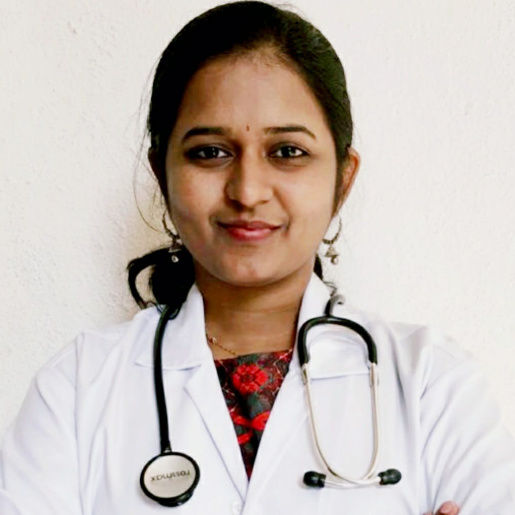
Dr Sravani Kuppam
General Physician/ Internal Medicine Specialist
12 Years • MBBS DNB General Medicine, CCDM (Diabetes)
Bengaluru
Apollo Medical Center, Marathahalli, Bengaluru

Dr Vishwa Vijeth K.
Pulmonology Respiratory Medicine Specialist
8 Years • MBBS, MD ( Respiratory Medicine)
Bangalore
Apollo Clinic Bellandur, Bangalore
Consult a Top Pulmonologist for Personalised Advice

Dr. Chaithanya R
Internal Medicine Specialist Diabetologist
16 Years • MBBS, MD Internal Medicine, Fellowship in Diabetes(UK), CCEBDM(PHFI)
Bangalore
Apollo Clinic Bellandur, Bangalore
(75+ Patients)

Dr Rakesh Bilagi
Pulmonology Respiratory Medicine Specialist
10 Years • MBBS MD PULMONOLOGIST
Bengaluru
Apollo Clinic, JP nagar, Bengaluru

Dr. P Sravani
Pulmonology Respiratory Medicine Specialist
3 Years • MBBS, MD
Visakhapatnam
Apollo Clinic Vizag, Visakhapatnam

Dr Sravani Kuppam
General Physician/ Internal Medicine Specialist
12 Years • MBBS DNB General Medicine, CCDM (Diabetes)
Bengaluru
Apollo Medical Center, Marathahalli, Bengaluru

Dr Vishwa Vijeth K.
Pulmonology Respiratory Medicine Specialist
8 Years • MBBS, MD ( Respiratory Medicine)
Bangalore
Apollo Clinic Bellandur, Bangalore
More articles from Tuberclosis
Frequently Asked Questions
1) Can you boost immunity to prevent TB?
There’s no single “booster,” but you can reduce risk with good nutrition, enough sleep, diabetes control, and avoiding smoking and alcohol. For household contacts, TB preventive therapy lowers progression risk. Ask about options like 3HP or 1HP where available.
2) What does a positive IGRA or skin test mean for immunity?
It means your immune system has recognised TB (latent TB and immune response), not that you have active disease. Your clinician may recommend preventive therapy depending on age, risk, and local guidelines.
3) After finishing treatment, am I immune for life?
You’ll likely have some immune memory, but immunity after recovering from TB isn’t complete. Re-infection can occur, especially with ongoing exposure or if immunity weakens.
4) Does BCG improve immunity against TB in adults?
BCG protects infants and young children from severe TB. Its effect against adult pulmonary TB varies. New vaccines are in trials and show promise for adults with latent TB.
5) When should I seek medical help?
If cough, fever, or weight loss persist beyond two weeks—or if you’ve had close contact with a TB case—seek care promptly. If tests are advised, Apollo 24|7 offers convenient home collection for routine labs like Vitamin D, and you can consult a doctor online for next steps.

